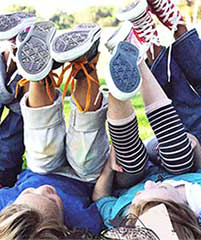Kids review finds middle ranking
 Australia has been ranked in the middle of the pack among developed nations on most key measures of child wellbeing.
Australia has been ranked in the middle of the pack among developed nations on most key measures of child wellbeing.
The Australian Research Alliance for Children and Youth (ARACY) has released its 2018 Report Card: The wellbeing of young Australians which uses the latest information available to track how young Australians are faring in international comparisons against 75 indicators of health and wellbeing.
Key findings include:
- Falling immunisation rates: The proportion of children aged 2 who are fully immunised fell from 92.7 per cent in 2008 to 90.5 per cent in December 2017. In 2015 Australia ranked near the bottom in the OECD for Measles Immunisation (33 of 35 nations) and 31 of 35 nations for Whooping Cough vaccination
- Increasing rates of mental illness: In 2014-15, 15.4 per cent of Australians aged 18 to 24 years suffered high or very high psychological distress up from 11.8 per cent in 2011
- Aboriginal and Torres Strait Islander Australians: Across most measures young Aboriginal and Torres Strait Islander Australians face extra obstacles. For example, they are over three times more likely to commit suicide than non-Indigenous youth and more than three times more likely to die of injury before the age of 14
There is some good news: smoking rates among young people are the lowest in the developed world, and Australia continues to lead in areas such as life expectancy at birth and the amount of time parents spend with their children each day.
ARACY CEO Stephen Bartos summarised the report card as “Australia: trying hard, could do better”.
“Every young person deserves a chance to succeed in life. We are doing well by some measures, but on far too many the data shows large numbers of Australian kids are missing out. A particular concern is too many Aboriginal and Torres Strait Islander kids are not getting a fair go.
“Because the issues children and young people face are complex, solutions must be integrated. ARACY encourages cooperation between state and federal governments, researchers, the community sector, and young Australians to ensure that every taxpayer dollar is being used to maximum effect based on evidence of what works.
“It is up to all governments to take the lead, for example, by placing a Minister with cross-cutting responsibility for children at the Cabinet table.
“We also ask all Premiers and Chief Ministers to consider ways to ensure Australia’s children are top priority. Making the issues young Australians face a regular item on the COAG agenda may also be a useful step.”








 Print
Print